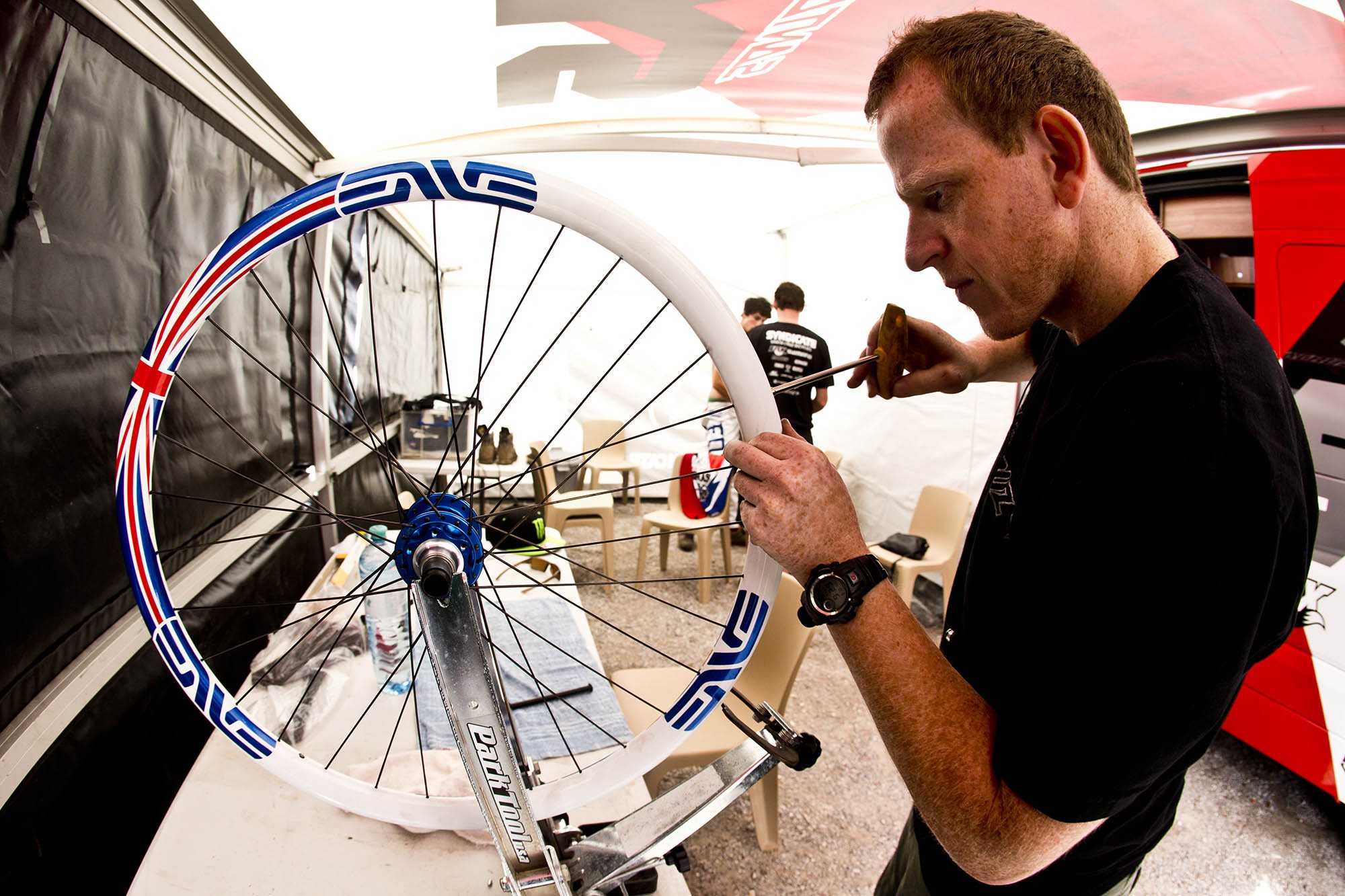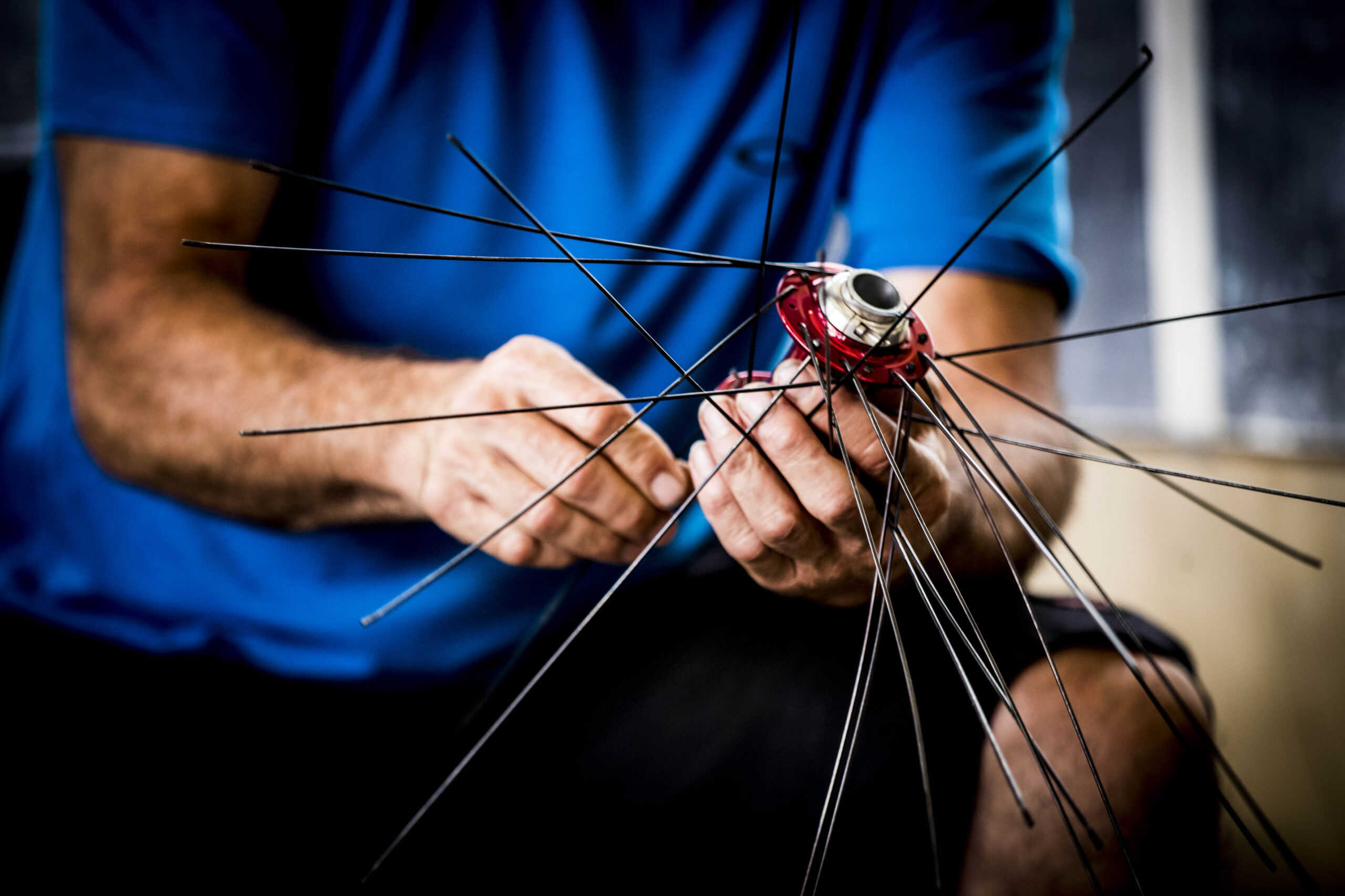The art of wheel building has been around for hundreds of years. It started with people constructing roundish items out of wood and metal to make their wagons more efficient. It evolved to high engagement hubs, lightweight aero spokes and carbon fibre rims. Yet, it was still an art form that led to a piece of unique equipment.
Lately, the complete pre-built wheelset market has boomed, and the art of building custom wheels is vanishing. A new wheelset, mass-manufactured in the thousands, can now be delivered to your house at the click of a button. But where is the fun in that?
Looking through the catalogue of hubs is a lot like looking at softcore adult magazines. Beautiful hourglass machined pieces of alloy in any colour you want. Premium engineering meets art as these simple pieces of metal are under extreme duress on every rider. They are often the unsung heroes of bike parts, common on every bike but never recognised for their vital necessity.
Once you have finished ogling over their beauty, you dig into the technical details. You wonder if you really need all 116 engagement points in the rear. Are you going to go with a standard pawl system or dual disc drive like DT Swiss? Maybe you can go unique with a Chris King Ring Drive or Onyx instant engagement clutch? The choices are endless once you consider bearing types or the good old 6-bolt vs Centerlock debate.
Once you have narrowed down the thousands of variants and have a beautiful purple heart at the centre of your wheel, you start looking at rims. It is hard to pass up a beautiful carbon rim from a niche manufacturer like Nobel, or We Are One. They offer vertical compliance for unsurmounted ride comfort but lateral stiffness for maintaining your line. However, these rims don’t come cheap.
You could look at super-refined, technically advanced marvels like Zipp Moto wheels or Crank Brothers Synthesis. Rims then flex and contort to the terrain, increasing traction and confidence. They are almost unbelievably expensive, and it is a tough decision whether you can part with your cash for technical superiority.
A cost-effective yet reliable option is available in the tried-and-true aluminium rim. While they may not look as fancy as the carbon weave hoops, they certainly make up for it in price. Alloy rims have similar vertical compliance to carbon; however, it is also lateral flex. The weight is heavier, and as we all know from reading comments on the internet, rotational weight is bad. However, alloy rims from DT Swiss are probably the most common choice for custom wheels for a reason, price.
 Your hub now sits in the middle of the rim but, that’s not worth much if they aren’t joined together. Spokes brought to an exact tension have been and will continue to be the best way to build wheels. Sure, one-piece wheels are a thing, but that thin strand of steel stands supreme when it comes to reliability and serviceability.
Your hub now sits in the middle of the rim but, that’s not worth much if they aren’t joined together. Spokes brought to an exact tension have been and will continue to be the best way to build wheels. Sure, one-piece wheels are a thing, but that thin strand of steel stands supreme when it comes to reliability and serviceability.
It was once believed that stiff wheels were the be-all and end-all of performance. Riders have now discovered that may not be the case. Some lateral flex retains grip in the corners as it will stay more perpendicular to the ground. Compliance can add traction and enhance comfort; spoke count and style can greatly impact these two variables.
More spokes add more stiffness, while less will allow the wheel to flex more. Obviously, fewer spokes will be lighter because, well, there are fewer spokes. Fewer spokes are often seen on the front for this reason. Fewer spokes on the rear often lead to too much flex and unreliability in the rear. This is where the art of wheel building truly becomes an art; finesse is required for the correct feel.
Spokes are no longer wooden or even straight lengths of steel anymore. Double-butted spokes add the perfect amount of strength with compliance. Thicker at the hub and rim so they can endure the stress, yet thinner in the centre for weight savings and compliance. If you want to go super, tech and compliant bladed spokes are your go-to.
You have everything laying on your floor, a pencil, paper and a vision but, you have no idea how to get the end product. A pile of 100 things need to be laced, threaded, tensioned and balanced so you can have the perfect wheels. A daunting and complex part for many that get handed to a professional as it is too hard.
However, like creating a piece of music or painting a picture, there is certain zen of working towards the end vision. Laying out the spokes in order of lengths, finding your lead spoke, and, of course, making sure the hub logo lines up with the valve hole. Lacing every spoke accurately and precisely draws 100% of your focus as one small mistake will ruin your whole day. Now it is laced and resembles a wheel. The repetitive nature of bringing the wheel to tension helps you relax, and you take a deep breath to start the tensioning process.
As you place the wheel in the truing stand, the true finesse becomes apparent. With slight twists of the spoke key, every spoke is tensioned. A wheel will slowly begin to go out of the circle or out of centre if it is not tensioned evenly. With every wheel rotation, you find the unequal sections and adjust accordingly, striving for perfection.
The wheel is no longer just a wheel made for riding. This wheel hasn’t just been boxed up and sent to your house. Every minute of obsessing over every detail has been worth it. You now have a custom wheel that is completely unique to you. It costs you time, money and, more importantly, effort to become the perfect wheel for your riding.
Again, I would like to ask, why has the art of wheel building disappeared? [R]


